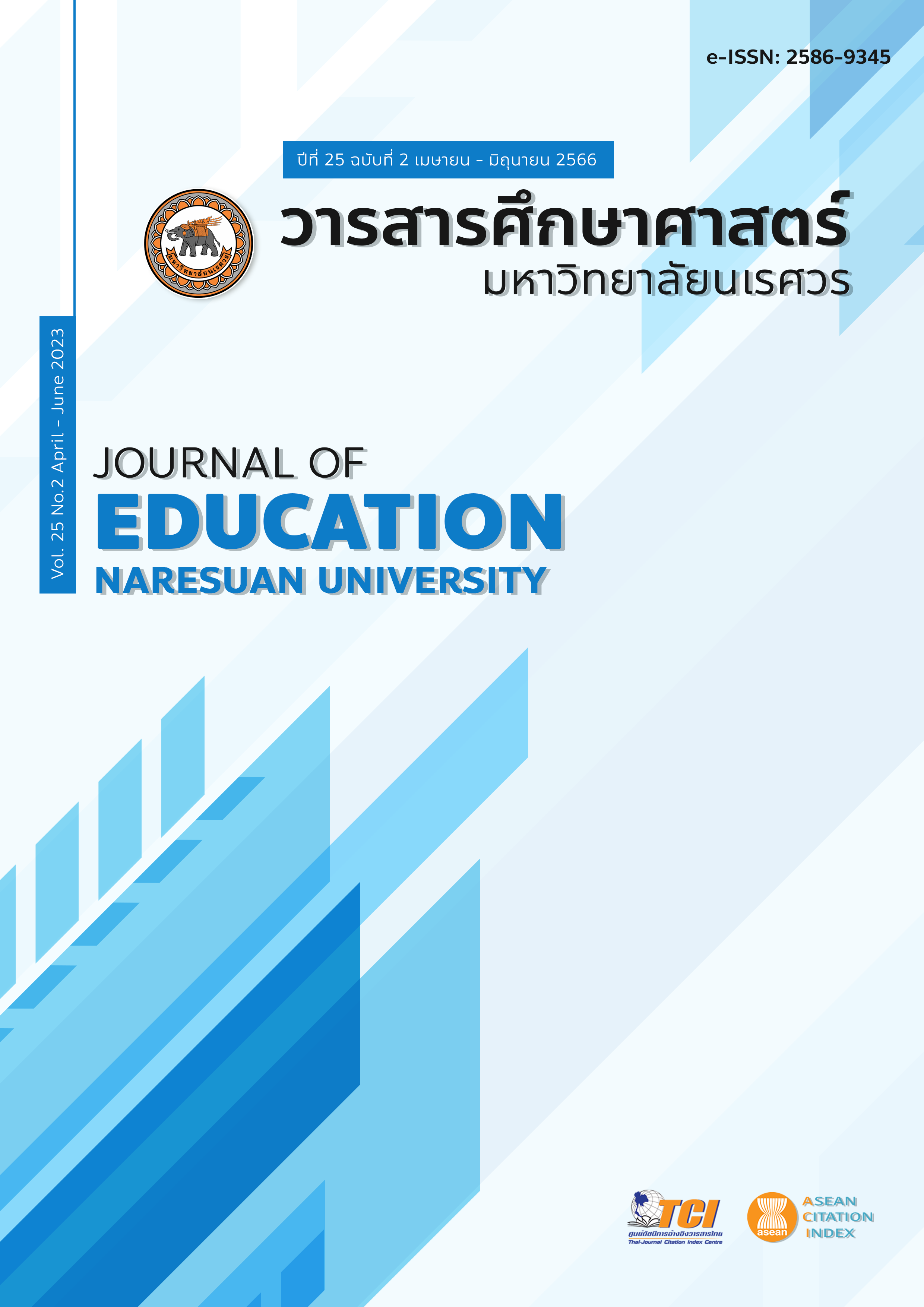ACTIVITIES CURRICULUM DEVELOPMENT TO ENHANCE CREATIVE INNOVATION ABILITIES INTEGRATED LOCAL WISDOM OF SECONDARY STUDENTS’ NONGBUALUMPHU PROVINCE การพัฒนาหลักสูตรกิจกรรมการคิดสร้างสรรค์เพื่อส่งเสริมความสามารถในการสร้างนวัตกรรมที่บูรณาการภูมิปัญญาท้องถิ่นของนักเรียนมัธยมศึกษา จังหวัดหนองบัวลำภู
Main Article Content
Abstract
The objectives of this research were to 1) study the basics of the creative activities curriculum, 2) create a creative activities curriculum, and 3) study the results of the creative activities curriculum to promote the abilities to create innovation integrated local wisdom. There are 3 phases, the study of basic data, creation of activities curriculum and curriculum implementation. The target group was students at the secondary school level in Nong Bua Lam Phu province. The results were;
1. creative activities curriculum that integrated local wisdom in educational institutions or policies that led to practice were not clear. The school operated in accordance with an urgent policy. Especially during the period of being followed up by a qualified follow-up assessment or supervision from external educational agencies, some of them had not achieved continuous and sustainable practice.
2. The curriculum had been developed, was 7 elements: principles and rationale, philosophy, concepts and theories, objectives, structure, activity guidelines, media and learning resources, measurement, and evaluation. The contents consisted of 1) Inspire, 2) Search for information, 3) Study of wisdom sources, 4) create innovation, and 5) disseminate innovation to the community.
3. The creative level of the students had a high overall grade point average after implementing was 48.9. The students had an excellent evaluation of the innovation ability of the students 89.1, the results of the assessment of the innovation process, the mean of 4.3 was in an incredibly good level.
Article Details

This work is licensed under a Creative Commons Attribution-NonCommercial-NoDerivatives 4.0 International License.
The owner of the article does not copy or violate any of its copyright. If any copyright infringement occurs or prosecution, in any case, the Editorial Board is not involved in all the rights to the owner of the article to be performed.
References
Breslow, J. (2015). The community creativity collective: Introducing and refining a community based model for creative curriculum development. Eugene, OR: University of Oregon.
Limchaloen, S. (2009). Development of curriculum to promote creative thinking for 2nd class students (Doctoral dissertation). Bangkok: Srinakharinwirot University. [in Thai]
Ministry of Education. (2010). Research report on local wisdom and teaching and learning management. Bangkok: Kurusapa Publishing House. [in Thai]
Ministry of Education. (2010). Basic Education Core Curriculum 2008. Bangkok: Printing House of Agricultural Cooperatives of Thailand. [in Thai]
Office of the Education Council Secretariat. (2019). National Educational Standards 2018. Bangkok: 21st Century. [in Thai]
Phanmanee, A. (2014). Practice thinking to be creative thinking. Bangkok: Chulalongkorn University. [in Thai]
Pornrungroj, C. (2003). Creativity. Bangkok: Chulalongkorn University Press. [in Thai]
Saephung, S. S. (2013). Development of basic career curriculum for people autistic People (Doctoral dissertation). Khon Kaen: Khon Kaen University. [in Thai]
Suthirat, C. (2014). Curriculum development: Theory to practice (2nd ed.). Bangkok: V-Print (1991). [in Thai]
Takkawatkan, M. (2015). Development of activities set to promote creative thinking skills for elementary students (Master thesis). Bangkok: Chulalongkorn University. [in Thai]
Urban, K. K. (2005). Assessing creativity: The test for creative thinking - drawing production (TCT – DP). International Education Journal, 6(2), 272 – 280.


